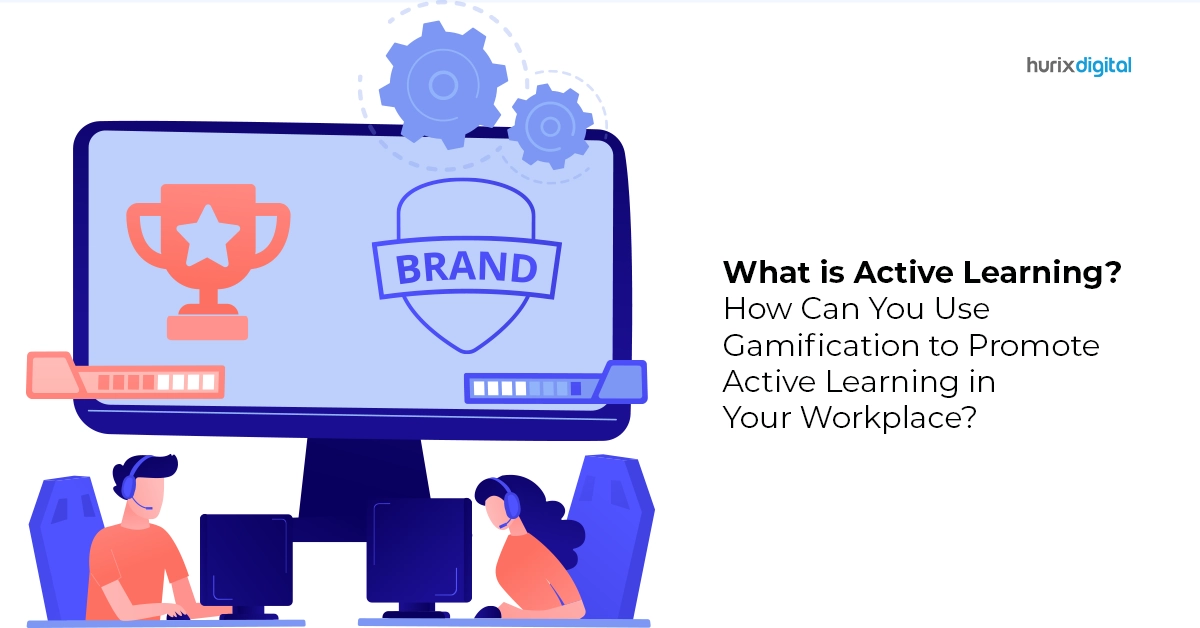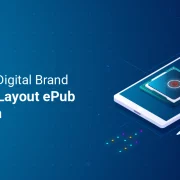
What is Active Learning? How Can You Use Gamification to Promote Active Learning in Your Workplace?
The days of snoozing through endless lectures are gone! Active learning is here to shake things up and turn education into an engaging activity. Active learning is a dynamic approach that shifts employees from passive recipients to engaged participants. It fosters higher levels of attention, retention, and understanding through interactivity and practical application.
Combining active learning with gamification, incorporating game elements into training or work tasks, can drive engagement further. By incentivizing learning with rewards, challenges, and a sense of progression, gamified learning motivates employees, enhances their experience, and boosts long-term knowledge retention in the workplace. 95% of employees prefer gamified training over traditional methods.
It fosters critical thinking, collaboration, and a genuine thirst for knowledge. Brace yourself as we delve into the world of active learning and how gamified elements have an instructional design that catapults the effectiveness of such training programs.
Table of Contents:
What is Active Learning?
Active learning is a revolutionary shift from the passive absorption of knowledge. It encourages learners to become active participants in their learning journey. It helps learners engage with the material better through discussions, group activities, simulations, and games. Such elements create habits of critical thinking, problem-solving, and knowledge application effectively.
The importance of active learning is rising steadily. The world is rapidly changing, and passive learning fails to equip individuals with the adaptability and agility needed to thrive. However, active learning helps learners grasp information and translate it into practical skills and problem-solving abilities, making it crucial for workforce training.
Employees can hone their skills, adapt to new technologies, and remain competitive in an ever-evolving landscape by actively engaging with training content.
Also Read: Best Practices for Translating and Localizing Workforce Learning Content
8 Uses of Gamification to Promote Active Learning in a Workplace
Active learning techniques have redefined training and learning. They cease to be boring activities and adopt a fun and exciting outlook. Let us explore how gamification can help promote interactive learning among employees.
1. Increases Engagement
Gamifying active learning makes learning and development feel like a game. Gamification in the workforce injects a dose of fun into your training programs using points, badges, leaderboards, and friendly competition. It keeps employees motivated and actively involved and helps them actively acquire knowledge.
Moreover, gamification establishes a motivating work environment, which boosts job satisfaction and productivity. Employees are more likely to enjoy the learning process when they are committed and invested in their work, leading to better results.
2. Fosters Collaboration and Competition
Gamification aids employee development and helps them level up their teamwork with collaborative challenges, shared goals, and engaging activities. It facilitates healthy competition and turns colleagues into learning buddies.
It boosts communication and engagement and ensures peer-to-peer learning. The interaction between learners creates a familial bond between individuals. The shared objectives foster valuable team ethics and ensure better understanding.
3. Offers Meaningful Rewards
Gamification involves the selection of rewards that are relevant and motivating to employees. Badges, recognition on leaderboards, tangible rewards, and opportunities for professional development, motivate employees to improve their performance continually and strive for better results.
Moreover, studies show that 72% of people are motivated to push boundaries owing to gamified learning. Positive reinforcement motivates learners to engage and actively work towards personal and company goals.
4. Includes Interactive Activities
Training and learning activities that involve diverse activities like quizzes, simulations, role-playing exercises, and problem-solving tasks are fun and appealing to participants.
Such activities encourage active participation from learners and boost their motivation for high achievements. It enables learners to understand concepts better, fuel their critical thinking, and apply their acquired knowledge effectively.
5. Defines Clear Learning Objectives
It is essential to outline specific learning objectives to achieve with workplace gamification. The game elements and activities can be directed towards their achievement after the establishment of these goals.
With clear goals in mind, employees actively participate in goal-oriented games and take challenges head-on. It facilitates better knowledge acquisition and retention.
6. Enhances Problem-Solving and Critical Thinking
Gamification involves scenarios, simulations, and challenges that require problem-solving skills and critical thinking. These elements urge learners to apply their knowledge to practical situations and actively work towards finding solutions to complex problems.
Such an approach encourages active participation from learners and increases their capacity to retain information.
7. Offers Immediate Feedback and Progress Tracking
Workplace gamification enables real-time feedback on performance through points, scores, and leaderboards. Rankings and recognitions allow learners to track their progress.
Feedbacks also help participants identify the areas for improvement and adjust their learning strategies accordingly. The continuous feedback loop encourages active participation and self-directed learning, which enables learners to reap improved outcomes.
8. Creates a Safe Space for Experimentation
Gamification creates a safe learning zone that encourages and pushes learners to experiment. It is a training ground where employees can make mistakes without real-world repercussions. It constructs a growth mindset that allows them to learn from their experiences and actively explore new concepts.
When learners expect zero consequences, they are motivated to experiment and learn actively to learn about concepts more deeply. It is like a practice session that boosts confidence and paves the way for successful knowledge acquisition.
Check out EXCLUSIVE: Hurix Mini-Book: Effective Training Techniques For Enterprises With Distributed Workforce
In Summary
Passive learning methods struggle to keep pace with the need for adaptable and skilled professionals in the fast-evolving world. Active learning emphasizes participation, critical thinking, and collaboration and pushes individuals to consume information, build their understanding, and translate it into practical skills.
The engaging elements of gamification further amplify the effectiveness of active learning and foster motivation, knowledge retention, and experiential learning. By embracing these innovative approaches, organizations can cultivate a dynamic learning environment that fosters continuous growth, innovation, and success.
Are you set to transform your workplace training and empower your employees? Hurix Digital offers a comprehensive suite of gamified learning solutions to engage your workforce, enhance knowledge retention, and drive impactful results. Contact us today and uncover the full potential of active learning in your organization.

Performance, Results, Growth, and Life-Long Learning define my professional life. I am passionate about making workplace learning planful, purposeful, and impactful. I take pride in partnering with clients and bringing them the best in learning design and creating solutions that address business challenges.





















